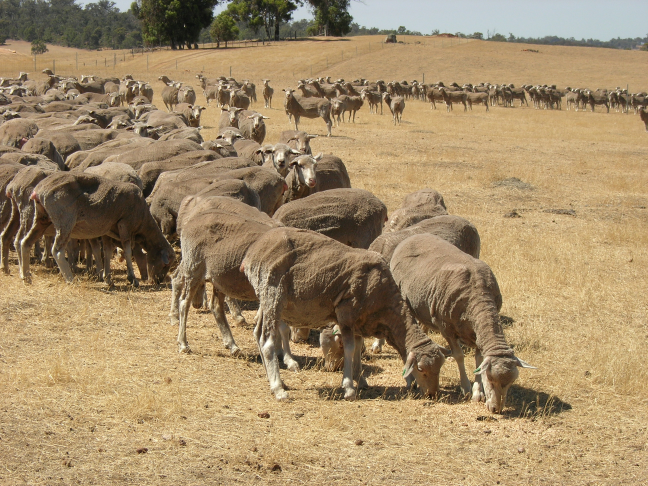Revealed: North-west to be the hit hardest in state by warming climate
Luke Williams
23 April 2024, 9:20 PM
 Image: Evergraze.
Image: Evergraze. A new report has detailed the significant difference in how some states and regions will be impacted by climate change – with North West NSW getting the biggest rise in summer temperatures.
Rural Bank has released its first climate report which says "The business environment is increasingly uncomfortable. The horizon has more risks and less certainty".
The report says that "climate change is already happening" and while there are global attempts to limit climate change to 1.5 degrees centigrade, "Average increases of 3°C are now more likely".
It suggests that Australia had its equal eight-warmest year on record and last winter was Australia's warmest on record but it is the predicted knock-on effects to industries like agriculture where the 'food for thought' lies.

Sheep mortality is expected to be go down because of hotter temperatures. Image: Australian Government.
"Climate change will not be evenly distributed around the globe or even within Australia. Air temperature change in some regions may be more than the global average" the report said.
In Queensland the climate is expected to become wetter, while in Victoria it is expected to get hotter and drier.
The report notes that in Queensland warmer temperatures are already reducing the life cycle of wheat and will cause flowering to occur two to three weeks earlier by 2030.
In New South Wales, "temperatures are expected to become hotter across the board – with summer temperatures the most impacted and expected to rise by more than two degrees":.

Andrew Smith. Image: Farm Weekly.
"The greatest increases in average temperatures (across NSW) are projected for the northwest of the state during summer" the report concludes.
It says that the north-western NSW region will have have additional 10-20 hot days in the future and predicts an additional 40 hot days (days over 35 degrees) across the region.
"Currently this part of the state experiences between 50 and 80 hot days each year. These projections suggest that by 2030, up to 100 days per year may exceed heat stress thresholds. By 2070 parts of north-western NSW may experience temperatures above the 35°C heat stress threshold across four months annually".
In turn the report suggests that these temperatures will lead to an increase in lamb mortality, decreased lamb birth-weight, reduced milk yield, acute heat stress and fewer days under 0c – thus leading to fewer chilling hours for horticulture.
The report also says that animals mate less in hotter temperatures.
Andrew Smith, Rural Bank Head of Development, Business & Agribusiness said: “Rural Bank sees agribusiness as having an increasingly important role to play in reducing emissions. Understanding the projected impacts regionally and how carbon mitigation programmes work is something we are keen to help Australian farmers better understand”.
“Technological solutions to reduce emissions also appeal to financial markets because new technologies, new patents and protected markets can provide a commercial advantage. The transport sector has benefited from innovations arising from investment of risk capital, yet agriculture is benefitting far less from investment in carbon reduction or sequestration technologies. This should change”, Mr Smith said.